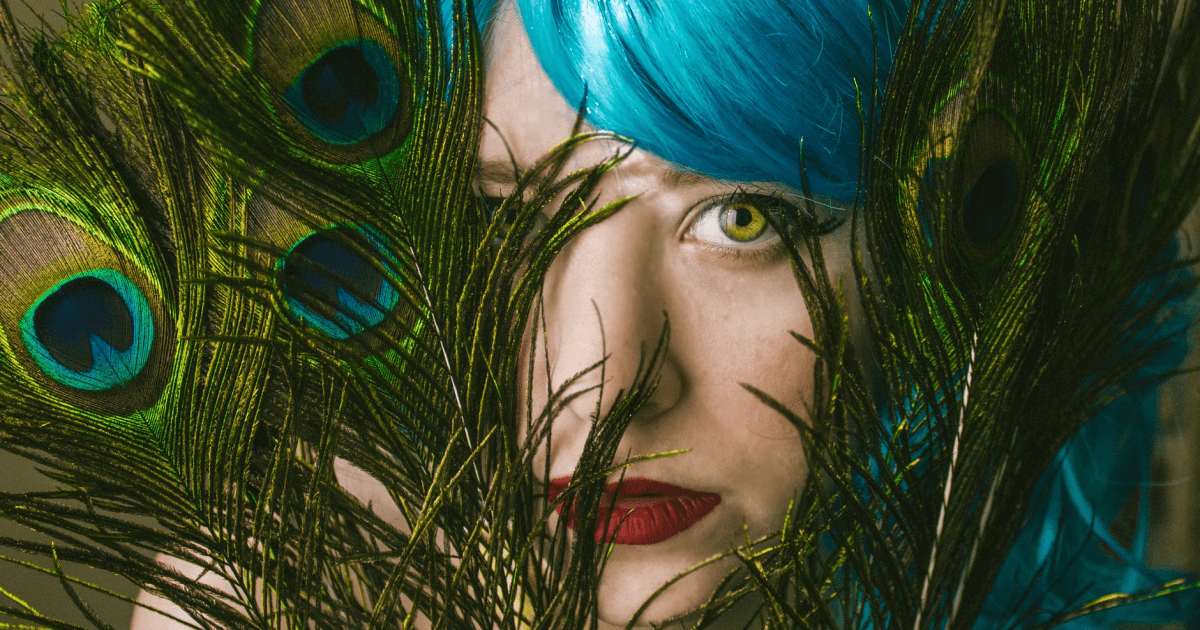In popular culture, it is said “on his head is a feather” as a metaphor for a person who is treated better than others for no apparent reason. In folk tales, a story is told about a thief who stole a chicken, so the owner of the chicken went to the judge to determine the thief among the suspects. The judge said, “This It is easy, whoever stole it, there is a feather on his head.” Of course, no one felt his head except for the thief, and he was arrested.
Feathers are a sign of victory
But why did man resort to using feathers in the field of clothing and fashion? It began in ancient civilizations that were characterized by tribalism, and tribes often entered against each other in multiple battles, and each tribe leader put a feather in his hat with each victory in a battle, so the image of the Native Americans wearing long hats decorated with many feathers is famous .
In the 16th century, after Europe colonized the Americas; The Spanish leader and land colonizer of the Aztecs in Mexico, Hernán Cortes, gave to the King of Spain at the time a group of tribal leaders’ hats decorated with feathers with a group of birds that do not exist in Europe and did not see them before.
The royal class was impressed by the idea of decorating hats with feathers, and the cry began to put a feather in the hats, whether for the leaders of the armies or for those belonging to the ruling and velvet class. Luxurious feathers are soft and sold.
Of course, feather fever moved to all of Europe, and feather hats became popular for a century, until Louis XIV, King of France, came, who not only put the feathers in their original condition, but also ordered them to be dyed in bright colors, and France’s control over the feathers trend began to swell with the departure of Spain About the lights of the fashion world.
And this cry remained strongly present in high societies that competed with its feathers placed on its head and which strange bird it belonged to, whether it was a peacock, a swan or an ostrich, while the slightly lower social class wore the feathers taken from ordinary birds that are easy to obtain.
On Marie Antoinette
But all of the above in the feathers trend does not reach the level that it reached when Marie Antoinette became queen of France, and invented new and strange hair styles, as she raised it very high and put various accessories on it, and of course the feathers were present, but it is on the head of Queen Marie not on any Another head, the height of a single feather could reach 3 feet, and gradually the feather fashion became associated with women, and disappeared from the hats of leaders and men.
After the French Revolution cut off the head of Marie Antoinette and the heads of the ruling class and their friends, many things disappeared and changed, but the use of feathers to decorate women did not end, on the contrary, it became a necessary accessory for every woman.
General use of feathers
Gradually, everyone aspired to wear feathers, and the workers in the field of performance noticed that the use of feathers in dancing creates a smooth movement that is not matched by the use of other materials. To elevate a person’s prestige to an object that performs his desired role on artistic theatres.
Feathered costumes were no longer alien to the eyes, not tied to a particular caste, nor used for a specific purpose; It was widely used among people of all classes, so that it became possible to add feathers to any piece of clothing, whether formal or informal, and it was possible to decorate any accessory with it, whether it was a hat, bag or even jewelry, without looking strange or alienating.
The only two things that have remained associated with the use of feathers in fashion from the pre-French Revolution era are that it became associated with the women’s wardrobe and moved away from the world of men, as well as the distinction between types of feathers based on the bird, ostrich and peacock feathers are still the most prestigious.
Feather Wear Ethics
Is the use of feathers in the fashion industry ethical? Animal rights workers assert that the use of feathers should be highlighted as much as the use of fur and leather, because most of the feathers sold in the market come from live birds that were tormented during the plucking process. The skins remind them of their pets, but the feathers do not pay attention to its origin and it does not remind them of anything.
In addition, some fashion designers say they get their feathers naturally from food factories and use birds as an essential part of their business, so no bird is tormented by their feathers.
And if international fashion houses were able to reduce and legalize the way they obtain feathers – according to the British newspaper The Guardian (The Guardian) – 80% of the feathers used in the manufacture of wholesale clothing come from China, where there is no interest in how to obtain feathers, but rather attention is focused on its quantity.
In the end, perhaps the Egyptian folk proverb was right when he said, “On his head is a feather.” Feather heads instead of removing them from the bodies of birds.





